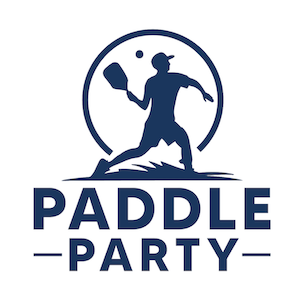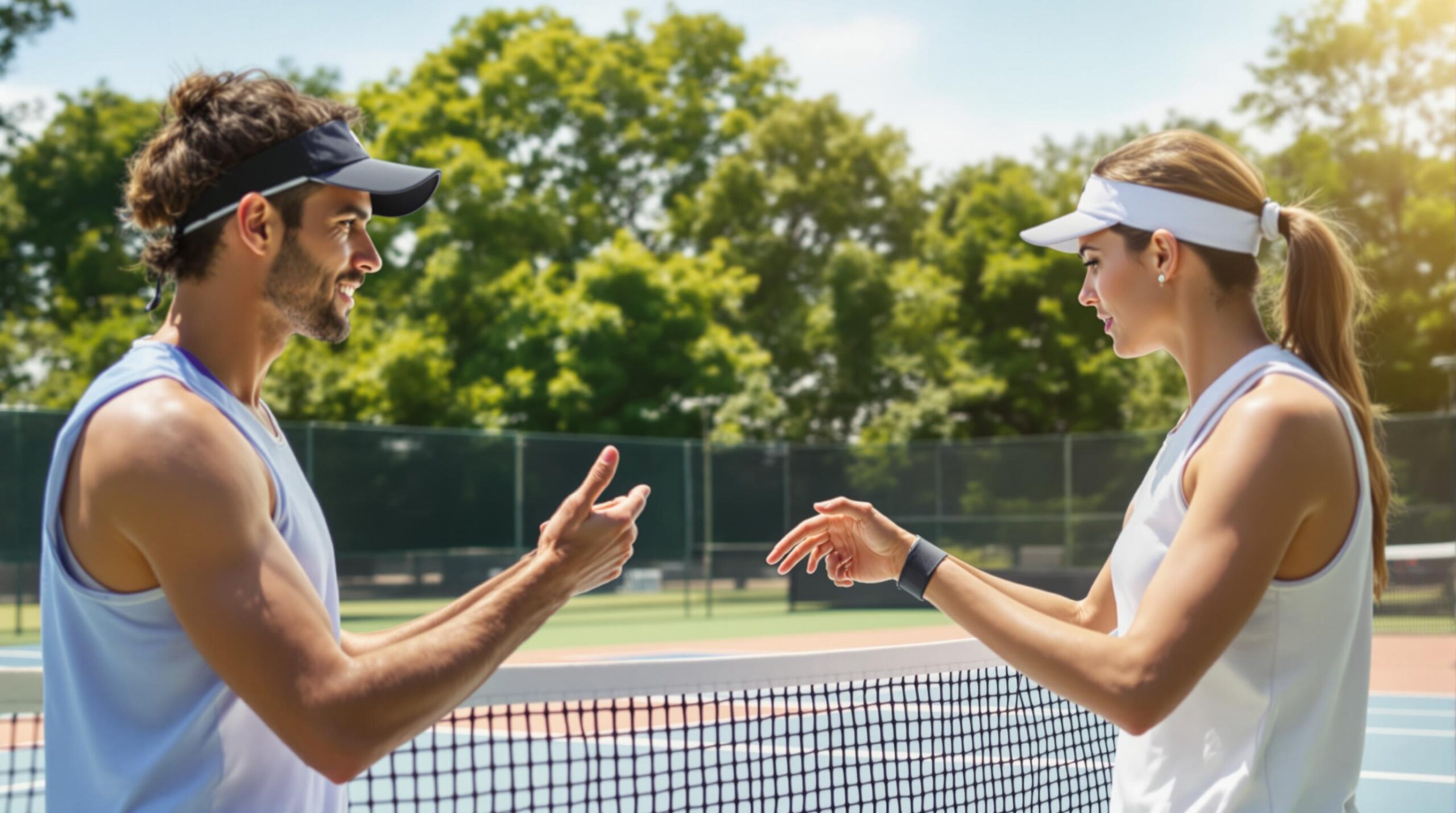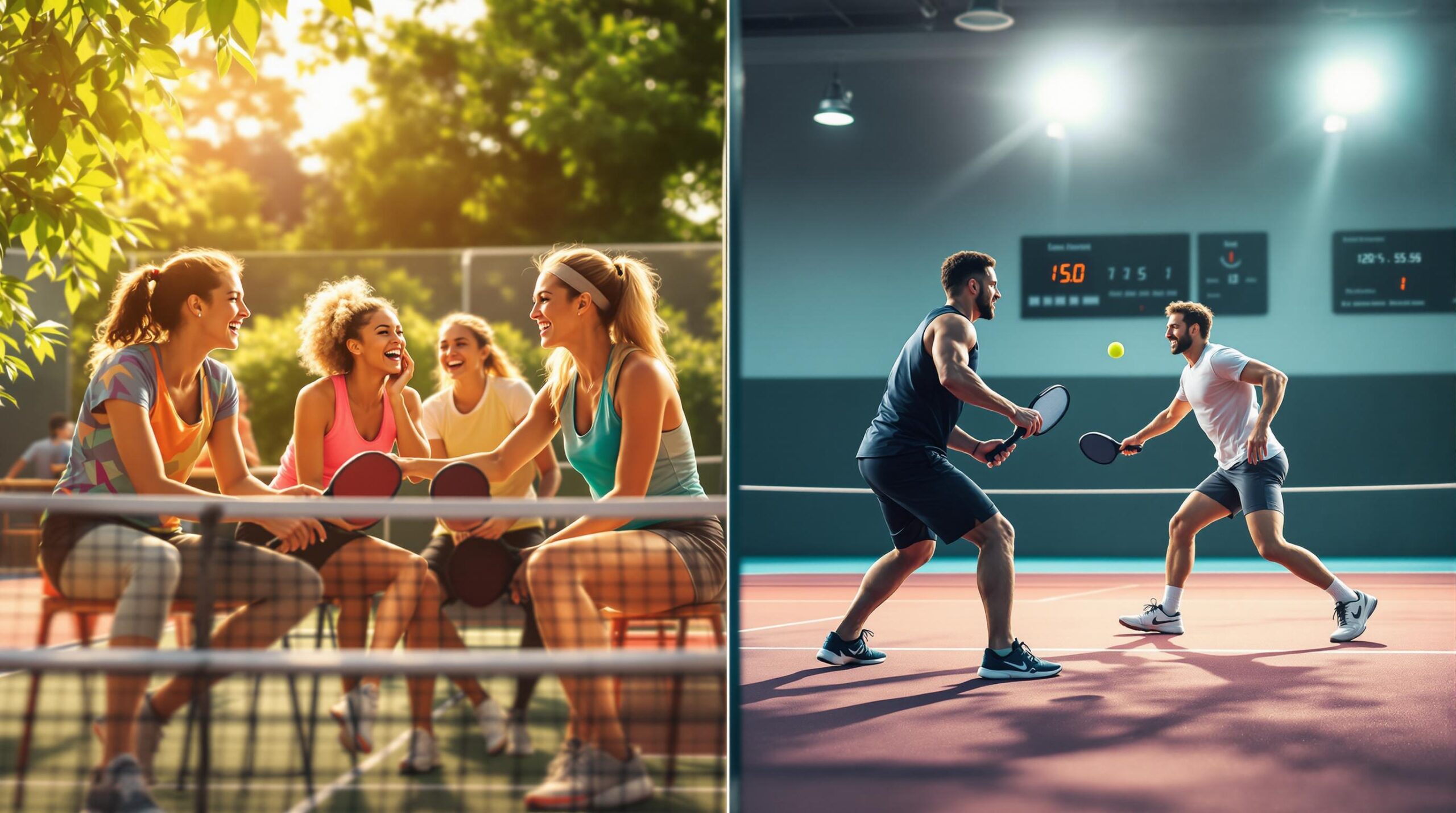Running a pickleball league can be tricky, but solving common challenges like scheduling conflicts or mismatched skill levels makes it much easier. Here’s a quick summary of solutions:
- Fix Schedule Conflicts: Use digital tools like Paddle Party to automate scheduling, reduce cancellations, and set consistent play times.
- Balance Skill Levels: Group players by ratings (e.g., DUPR) and adjust divisions as needed for fair competition.
- Keep Matches Friendly: Set clear behavior rules, follow official guidelines, and resolve disputes quickly.
- Reduce Court Wait Times: Organize efficient player rotations, use off-peak hours, and manage match flow effectively.
- Keep Players Active: Track stats, reward achievements, and highlight progress to boost engagement.
- Plan for Bad Weather: Secure indoor courts, communicate updates promptly, and encourage indoor practice.
These strategies ensure smoother operations, fair play, and happier players. Whether addressing scheduling, skill levels, or weather disruptions, small changes can make a big difference.
Mastering the Game: Successful Strategies for Operating an …
1. Fix Schedule Conflicts
Scheduling conflicts can disrupt leagues, but digital tools make match planning and regular play much easier.
Set Up Online Scheduling
Digital platforms simplify managing player availability and court assignments. With the right system, you can minimize scheduling issues and avoid last-minute cancellations.
"Our members love the CourtReserve App ease of use to book their events and court time which leads to fuller events and more reservations and fewer calls and emails to staff. We appreciate how much CourtReserve is always innovating and improving the software to make it work better for the club, staff, and players!" – Christy H, Co-Founder
Platforms like Paddle Party are great for addressing scheduling problems. They can:
- Automate match schedules and court assignments
- Let players mark their availability ahead of time
- Manage waitlists for quick replacements
- Send automated reminders to reduce no-shows
Choose the Right Match Format
The number of courts available should influence the match format you select. Here’s a quick guide:
| Courts Available | Recommended Format | Best For |
|---|---|---|
| 1–2 | Round Robin | Small groups (8–16 players) |
| 3–4 | Pool Play + Single Elimination | Medium groups (16–32 players) |
| 5+ | Pool Play + Double Elimination | Large groups (32+ players) |
For ongoing leagues, ladder tournaments work well. They allow players to schedule matches at their convenience within a set timeframe, keeping competition balanced.
Pick Regular Weekly Times
Consistent scheduling helps players plan better and reduces conflicts. For example, Stone Creek Pickleball Club successfully managed over 100 members during a 3-week period using a structured schedule.
To establish regular times:
- Schedule matches during peak times, like weekday evenings or weekend mornings
- Use 90-minute blocks for competitive matches
- Add buffer time between matches
- Offer both weekday and weekend options for flexibility
2. Balance Skill Levels
Uneven skill levels can ruin the fun in any league. A solid rating system and clear rules for dividing players can help keep matches competitive and enjoyable.
Group Players by Rating
DUPR (Dynamic Universal Pickleball Rating) is a reliable way to sort players into the right divisions. This free system, used by professional pickleball tours, assigns ratings from 2.000 to 8.000 based on actual match results.
Here’s a simple way to organize divisions using DUPR:
| Skill Level | DUPR Rating Range | Recommended Division |
|---|---|---|
| Beginner | 2.000 – 2.999 | Recreational |
| Intermediate | 3.000 – 3.999 | Competitive B |
| Advanced | 4.000 – 4.999 | Competitive A |
| Elite | 5.000+ | Premier |
"As an active pickleball player, I know the importance of competing against players at your level for maximum enjoyment… DUPR is the most accurate system out there that gives all players a simple and easy way to know their skill level."
– Andre Agassi, Former World #1 Tennis Player
These ratings can also guide adjustments to divisions throughout the season.
Set Up Division Movement
- Players who consistently win should move up.
- Players who struggle repeatedly may need to move down.
- Make changes gradually and only between adjacent divisions.
- Adjust placements during natural breaks, like between seasons or round-robin cycles.
Test Skills Before Season
Once you’ve outlined movement rules, confirm player placements with a pre-season evaluation. Paddle Party’s skill-based divisions help organize players from beginner to advanced levels.
"I enjoy teaching immensely, but it’s always difficult when people sign up for the wrong skill level clinic. They simply don’t know any better. I’m excited to have a way for your everyday player to know where they stand so that they can learn and compete with people of their own skill level."
– Zane Navratil
- Start with USA Pickleball’s self-rating system as a baseline.
- Have new players attend an evaluation session.
- Monitor early performance and adjust placements after a few matches.
Matching players with similar skills makes games more fun and keeps everyone engaged, boosting player retention over time.
3. Keep Matches Friendly
Good sportsmanship plays a big role in making league games enjoyable for everyone. Clear rules and fair enforcement create a positive atmosphere during matches. Below are some steps and guidelines to encourage fair play and ensure everyone feels welcome.
Set Behavior Standards
Establish clear behavior rules to avoid conflicts. Using USA Pickleball’s sportsmanship guidelines as a foundation, consider these key points:
| Behavior Category | Expected Actions |
|---|---|
| Court Etiquette | • Introduce yourself • Acknowledge good plays |
| Line Calls | • Make honest calls on your side • Respect opponent’s calls • Resolve uncertain calls in favor of your opponent |
| Partner Relations | • Support your partner • Correct any incorrect calls your partner makes • Avoid negative comments |
"Pickleball was created to be a fun, competitive, and highly social sport. Since its inception, it has embodied an ethic of good sportsmanship that includes respect, fair play, and graciousness in winning and losing." – USA Pickleball Sportsmanship Guide
Stick to Official Rules
On top of behavior guidelines, follow these essential principles:
- Only make line calls for balls landing on your side of the court.
- Call faults on yourself or your partner when they happen.
- Request replays only for valid reasons, like unexpected distractions.
- Avoid coaching unless someone specifically asks for advice.
During casual games, stronger players should avoid aggressively targeting weaker ones. This keeps the game fun and welcoming for players of all skill levels.
Resolve Disputes Quickly
Addressing disputes promptly keeps matches running smoothly. Here’s how disputes can be handled:
- First Step: Let players try to resolve disagreements on their own.
- Second Step: If players can’t agree, involve a league coordinator to mediate.
- Final Step: Use official rules to make a clear and final decision.
League administrators should keep records of disputes and their resolutions. This helps identify recurring issues and refine policies to prevent future problems. Regular monitoring ensures the league remains a positive and enjoyable space for all players.
sbb-itb-b64fdb6
4. Reduce Court Wait Times
Keeping games moving smoothly is essential for maintaining an enjoyable experience on the court. Efficient scheduling and rotation systems can help minimize wait times.
Set Up Player Rotations
Organizing player rotations is a simple way to keep everyone involved. Here are a few rotation methods:
| Rotation Type | How It Works | Best Used When |
|---|---|---|
| Four on, Four off | The next 4 players in line take the court when it’s free | Large groups with mixed skill levels |
| Challenge Court | Winners stay on the court, and losers move to the back of the line | Multiple courts are available |
| Skill-Based Groups | Players rotate within their skill level groups | Clear skill divisions are present |
"One of the unique parts of pickleball is the amount of participation that happens at open play (some call it paddle stack)." – Jason Flamm
Accelerate Match Flow
- Rotate players after three games to maintain momentum.
- Use color-coded signals or markers to clearly show which courts are available.
Schedule Off-Hours Play
Encourage players to book early-morning slots (before 9:00 AM) or use attendance data to make better use of off-peak hours.
These strategies make it easier to keep players engaged and ensure everyone gets ample time on the court.
5. Keep Players Active
Keeping players engaged is key to running a successful pickleball league. Tracking progress and recognizing achievements can help maintain enthusiasm and participation. Just like efficient scheduling keeps things moving smoothly, tracking stats and offering rewards keeps the league buzzing.
Highlight Player Stats
Sharing player stats helps build accountability and keeps everyone motivated. For instance, Paddle Party automatically updates DUPR ratings, giving players a clear picture of their progress. As Peter Drucker famously said, "What gets measured gets improved". With access to stats like win/loss records, attendance, rating changes, and division standings, players can see how they’re doing and where they can improve.
"Success is the sum of small efforts, repeated day in and day out." – Robert Collier
Even small wins, like improving shot accuracy from 60% to 75%, become meaningful when tracked regularly.
Reward Players with Awards
Recognizing achievements keeps the momentum going. Consider awards like these:
| Award Type | Criteria | Recognition Method |
|---|---|---|
| Most Improved | Largest DUPR rating increase | Digital badge and certificate |
| Perfect Attendance | No missed matches | Season-end recognition |
| Sportsmanship | Peer nominations | Featured player profile |
| Division Champion | Best playoff performance | Trophy and digital badge |
These awards encourage progress and reinforce positive habits, making the league experience more rewarding for everyone.
6. Plan for Bad Weather
Bad weather can throw a wrench into outdoor pickleball leagues, but having a solid plan can keep your league on track no matter the season.
Book Indoor Courts
Securing indoor courts is a smart way to ensure games continue uninterrupted. Across the U.S., many facilities provide excellent indoor options:
| Facility Type | Advantages | Common Features |
|---|---|---|
| Dedicated Centers | Controlled climate | Pro shops, lounge areas |
| Multi-use Facilities | Flexible scheduling | Food options, entertainment |
| Community Centers | Budget-friendly rates | Basic equipment rentals |
For example, the Missouri Pickleball Club boasts 18 indoor courts, catering to players year-round. Similarly, Pickleball Kingdom in Chandler, Arizona, offers 15 indoor courts, complete with tournament setups and a snack bar.
Suggest Indoor Practice
Indoor sessions aren’t just for backup – they’re a chance to refine skills. Without outdoor distractions like wind or sun, players can focus on technique. Facilities like House of Pickleball in Leland, North Carolina, provide six climate-controlled courts and various training programs, making them ideal for structured practice. Indoor courts match outdoor dimensions, so any progress made translates directly to league play. Keep players informed about schedule changes to ensure smooth transitions.
Send Weather Updates
Quick communication is key to managing disruptions. One club grew to 700 members by using a management system for real-time updates and court reservations.
When bad weather hits, prioritize these notifications:
- Match cancellations: Notify players immediately.
- Rescheduling options: Share new times and locations.
- Indoor facility details: Provide backup court information.
Clear and timely updates can help minimize confusion and keep your league running smoothly.
Conclusion
Running a pickleball league comes with its share of challenges, but practical solutions can make the process smoother. Using digital tools for scheduling and communication can cut down on administrative stress while enhancing the experience for players.
Organizing fair divisions and setting clear behavior guidelines ensures a positive atmosphere where players can enjoy the game. Encouraging community involvement through well-planned programs plays a key role in building a thriving league.
Here’s a streamlined framework to guide your efforts:
| Phase | Focus Areas | Expected Outcomes |
|---|---|---|
| Initial Setup | Adopt digital tools and establish rules | Simplified operations and clear guidelines |
| Player Management | Skill ratings and division structuring | Fair competition and balanced matchups |
| Community Building | Events, stats tracking, and recognition | Higher engagement and retention |
| Weather Planning | Indoor facility options and communication | Consistent play throughout the year |







